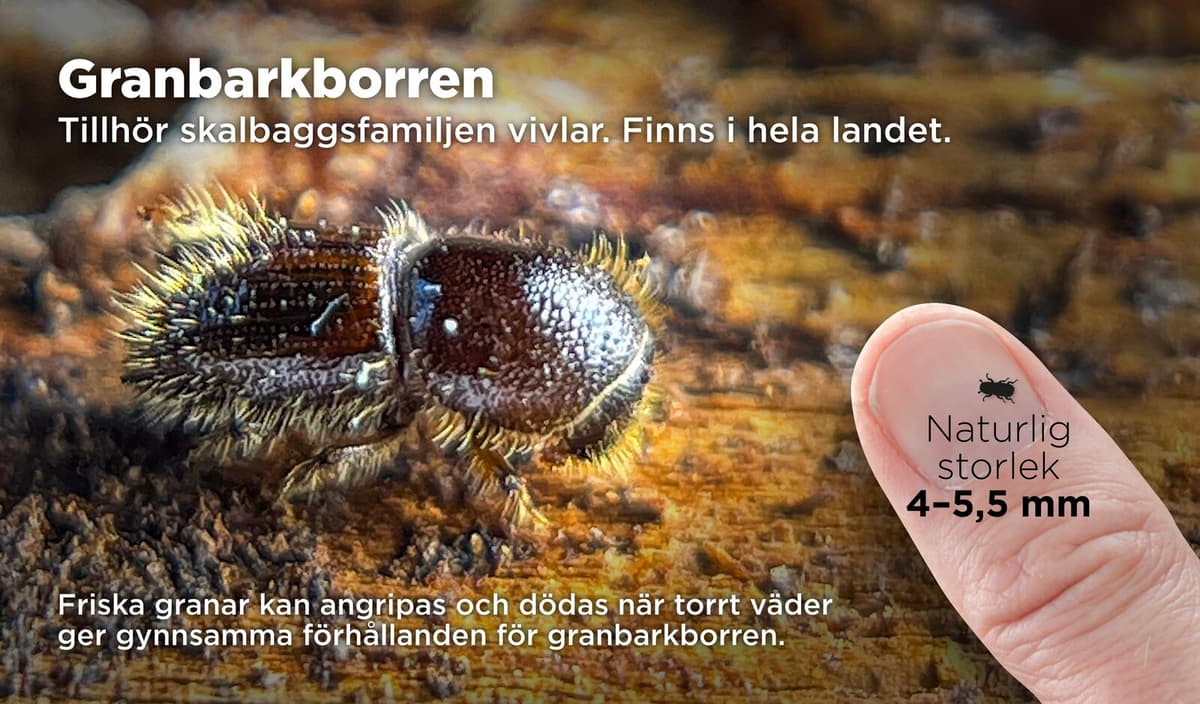The outbreak gained momentum in 2018 when the drought and heat of the summer created unusually good conditions for the spruce bark beetle to reproduce and kill spruces.
Now it seems to be over. According to an inventory at the end of last year, the damage caused by the insect has decreased by 95 percent compared to the peak year 2021.
The control areas with special rules were introduced five years ago and cover large parts of southern and central Sweden.
"Now the population of the insect has decreased and we no longer see the need to have specially designated areas where there should be stricter requirements than in other areas to take care of blown-down and damaged spruces", says Mattias Sparf, expert at the Forestry Agency, in a press release.
At the same time, the laws are being changed with the hope that it will become easier to combat new attacks in the future. Instead of introducing control areas, the Forestry Agency will be able to intervene directly to limit the occurrence of harmful insects. For example, by felling and removing standing spruces with fresh attacks.
Since 2018, the spruce bark beetle has gnawed up enormous amounts of forest. In total, the four-millimeter-long insect is estimated to have killed 34 million cubic meters of spruce, worth tens of billions of kronor, according to the Forestry Agency.





